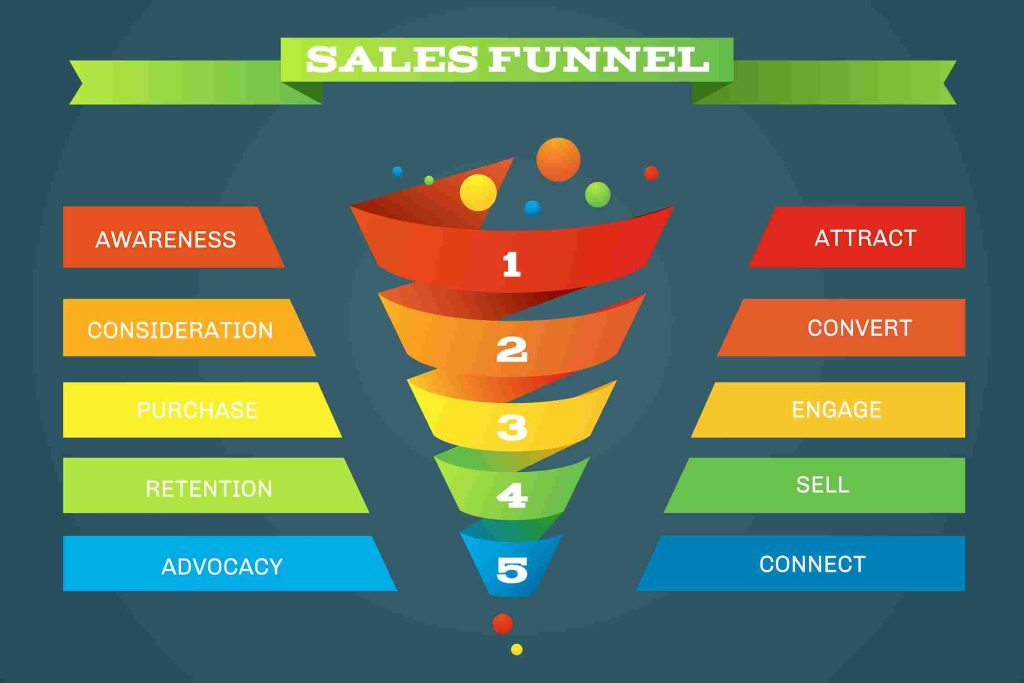
What are Leads? How to convert Leads to Customer Guide
What is a leads? This question usually needs to be answered. After all, marketing and sales always assume that everyone knows what the term lead means. Both departments have the goal of winning new customers – regardless of what the associated technical term is called. But to sustainably expand the customer base, creating a common understanding of a lead is necessary.
Our article explains what leadership means and how you can work successfully. You will also learn what lead generation is and how you can design your lead management so that you can reliably acquire new customers.
What are leads? A general definition.
The term lead is derived from the English “to lead,”. These are interested parties that a company introduces to its products and services. To do this, they need the contact details of the interested party. As a result, leads aren’t just anonymous prospects or website visitors; they’re contactable people who are interested in a business. For you, leads are potential new customers.
Leads typically consist of at least one email address, phone number, or address. Sometimes additional information is added, such as the name of the person or company they work for and their job title, if applicable. It is important to note that the contact details have been collected in compliance with the GDPR. This requires a legally secure double opt-in process. So-called lead magnets are necessary so that your prospects reveal their contact details. These are offers or content you make available free of charge – in exchange for providing contact information. These include, for example:
White papers and e-books
Newsletter
webinars
discount promotions
Sweepstakes
To get the relevant content or the attractive offer, the interested party usually has to enter their name (for personalization purposes) and their email address in a data form. And you have won a new marketing lead with just one form submission, which you can further introduce to your products and services. Marketing and sales, in particular, often talk about leads, but these departments sometimes talk about different types of leads.

What types of leads are there?
For a company to successfully generate leads and thus boost the acquisition of new customers, detailed knowledge of what a lead is is required. Because leads come in different qualities and types, a lead is not just a lead. The quality of the lead or its progress towards the decision-making process or the sales goal can be seen along the sales funnel. The leads you generate can be broken down into four types from the top of the sales funnel to the bottom of the funnel: Marketing Accepted Leads (MAL), Marketing Qualified Leads (MQL), Sales Accepted Leads ( SAL), and Sales Qualified Leads (SQL).
Marketing Accepted Lead (MAL)
Marketing accepted leads are leads that can be assigned to demographic categories. For example, they hold a certain position, work in a specific industry or fit into a certain age group. MALs are interesting contacts from your organization’s perspective because they would be a good fit for you and your products or services as a customer based on the assigned category alone.
Marketing Qualified Lead (MQL)
Marketing Qualified Leads have shown interest in your business based on specific behavior. This is the case, for example:
Someone downloaded your white paper.
Someone has signed up for your newsletter.
A person attended your webinar.
That means an MQL has your company or brand in mind by itself. He hasn’t bought anything yet. But in principle, he is inclined to do just that. However, since an interested party only becomes a leader in their digital customer journey if they reveal their contact details through one of the actions mentioned, the gradation from MAL to MQL can vary. Especially in long B2B decision-making processes, multiple content downloads or other actions may be required for a lead to reach MQL status. This can be defined and determined as part of lead scoring.
Sales Accepted Lead (SAL)
SALs, i.e., Sales Accepted Leads, are then the contacts that the sales department accepts. They are pre-qualified through marketing campaigns such as a lead nurturing campaign and are, therefore, ready to be contacted by sales with concrete offers. This also usually means that the leads that marketing is talking about are different from those that sales see as such. Especially in B2B, the MALs and MQLs are usually not ready for a concrete sales talk or may not be the decision-makers.
Sales Qualified Lead (SQL)
Sales Qualified Lead (SQL) refers to all those leads that are highly likely to become new customers. An SQL is, in effect, a lead that has moved up another level. This requires a price or demo request. This is crucial to turning a lead into a real customer.
How to win a lead? An individual definition

To win leads and be able to develop them into customers in a targeted manner, it is essential that marketing and sales agree on definitions that are suitable for the company. Questions like the following need to be answered here:
Which potential customers are interesting for the company?
What characterizes the target group or the buyer persona?
What characterizes and distinguishes MAL, MQL, SAL, and SQL?
Who takes care of which type of lead?
How and when do the transitions (conversions) take place?
When should a lead be handed over from marketing to sales support?
Careful lead definition, which takes place in cooperation between marketing and sales, not only strengthens mutual trust in the steps to be processed. It also ensures a smooth and effective lead management process. And sales also benefit from this, as they automatically have a better view of their sales funnel management.
Lead Management: How to take care of your marketing leads
Lead management helps you to take care of your leads in a systematic way. The easiest and most efficient way to do this is with a lead management tool, which allows you to
to systematically and efficiently generate and develop high-quality leads,
Qualify leads for sales using automated campaigns
Transferring MQLs to the sales department via a defined lead routing, and
Easily sync contact information between Marketing Automation Software and CRM system as well
Get comprehensive insights into your customer potential.
Professional lead management also includes automatically controlling and evaluating campaigns. A corresponding tool shows its advantages in each of the relevant sub-processes:
Step 1: Generate leads
Lead generation is the process by which you generate leads. This includes all activities that contribute to attracting more interested parties and making them contactable. You can generate leads through various channels and with a variety of activities. Typical approaches are:
Content Marketing and Search Engine Optimization
Social Media and Social Selling
Digital, hybrid, and on-site events
Ads and SEA
Step 2: Contacts nurture
Once you’ve generated marketing leads, your goal is to develop them further until they’re ready for sales contact in the next step. This is where lead nurturing can help. It feeds your accumulated contacts, thereby helping them to become qualified leads. You periodically send your Marketing Lead (MAL) relevant information. You plan to send this information in advance using your lead management tool. The nurture process is automatically triggered and executed as soon as a website visitor has become a lead.
Step 3: Score leads
The next step in your lead management is lead scoring. The point is to recognize if your marketing leads are ready to be handed off to sales. So whether they will move from MQLs to SALs, to judge that helps to classify the leads. You mostly use explicit and implicit data. Detailed data is profile data, such as the company or industry a lead works. The implicit data includes, for example, the number of emails the lead has opened and which articles they have read or downloaded content.
Step 4: Hand contacts over to the sales
Lead routing builds on lead scoring. It describes the process by which you route your leads to sales. It is important to find the right time for this. This is when the lead is ready to become a new customer. The scoring determines the evaluation framework and the threshold for the handover.
Good to know what leads are
Knowing what leads are, how you generate them, develop them and hand them over to sales is crucial to your company’s success. It is worth establishing an individual lead management system tailored to your company and includes marketing and sales right from the start. In this way, you will find potential new customers safely and sustainably.




